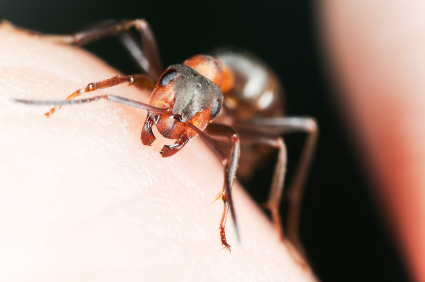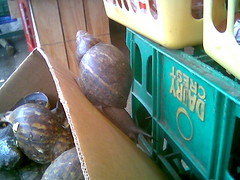Tag Archives: Bulwark Exterminating
4 Bugs That Should Be In A Band
LaLaLaLaLa! Sure you might rock out to the Goo Goo Dolls, but did you know there is a rowdy bunch right beneath your feet? Check out these four tiny musical artists that could be in your backyard:
Crickets and Grasshoppers
Who isn’t familiar with these tiny musicians? Known as nature’s fiddlers, Crickets and Grasshoppers use stridulation as their favorite form of music making. Crickets have a comb like vein that runs along the bottom of each wing. These little guys make sounds when they rub the bottom of one wing along the top of the other wing. This makes a chipping noise while grasshoppers make more of a snapping or soft rattling sound. Grasshoppers make noise a little differently by snapping their wings together in flight or by rubbing their hind legs against their wings making it sound like they are shaking a rattle.
Cicada
Cicada, also referred to as locust, make a very unique sound, which is often referred to as Cicada Song. They have noisemakers called “tymbals” on the sides of their abdominal base. When they contract the muscle located within the abdomen the tymbals cave inwards and make a loud clicking sound. By positioning their bodies and adjusting the speed and force of which it vibrates, they can amplify their sound.
Katydid
The Tettigoniidae family, or Katydids are quite a musical bunch! These guys have noise making organs, which are also activated by stridulation. The tropical loving insects rub the back part of their front wings making a beautiful song.
Water Boatman
Micronecta scholtzi, aka Water Boatman, would definitely be the lead singers in a band, if only the band were underwater! This tiny bug, about the size of a grain of rice can belt its song up to 99.2 decibels. This is comparable to the sound of a passing train or a live orchestra. The boatman uses this noise as a mating call. They make it by rubbing an organ along their ribbed abdomen. Unfortunately, the sound is lost when it passes from water to air, leaving the lovely inhabitants above sea level, without the beautiful song of the water boatman.
Next time you forget your iPod, fret not! Just walk outside (or stick your head under water) and listen to some sweet tunes performed your backyard rock stars. A night on the town to see a local band does not have to be too far from home!
Author Bio: Angelina Spence writes about all things insects for Bulwark Exterminating in Houston, TX. While away from the computer, I enjoy running and doing yoga.
Related articles
Top 3 Pests In Houston
I was fortunate enough to sit down with one of the pest management professionals at Bulwark Exterminating in Houston a few days ago, and get some much needed advice about some of the pests in the area.
One of the questions I really was interested in getting an answer too was, “What are the most common pests in the Houston area you guys get call about?”
Here are the top three pests in Houston:
3. Crazy Ants
If I was to ask what the most called about pests are in Houston a couple years ago, the Crazy ant would not have even made the top ten. This ant, also referred to as the Rasberry Crazy ant or the Tawny Crazy ant, is a virtual newcomer to Houston. Even though this ant is relatively new to the area, it is taken over in huge numbers; pushing out other species of ant.
The reason Bulwark get’s so many calls about Crazy ants is that they will literally go everywhere. They invade homes, attracted to electrical impulses of our electronics and appliances. Once inside, they’ll nest in walls, and will damage electrical equipment by swarming inside. This behavior in known to cause air conditioners, and other electrical equipment to short out and fail. The result? Expensive repairs. Its because of this reason, homeowners get professional Houston ant control; before Crazy ant problems escalate.
Learn more about Houston Fire ants being driven out by Crazy ants.
2. Fire Ants
It’s hard to argue with the Fire ant being number two on the list of most common called about pests in Houston… Their stings are miserable! Fire ants make it really hard to send your kids out in the back yard to play. When your kids’ curiosity sets in, they’re going to disturb one of the fire ant mounds… It may even be by accident. Upon doing so, the colony of Fire ants will come spilling out of the mound, ready to defend their nest by stinging! When they sting, they grab tight with their pinchers and continuously sting with their abdomen in a circular motion. Multiply this a dozen times, and you have a very painful and unfortunate situation on your hands. Ouch!
When you see those huge ant mounds in your backyard, it’s time to enlist the services of a Houston Fire ant control professional.
Learn more about Houston residents battling Fire ants.
1. Cockroaches
The hot and humid Houston weather, combined with the moderate winters, make ideal breeding conditions for cockroaches. Their sheer numbers are almost incomparable to almost any other major U.S. city. The mass quantities of cockroaches in Houston make them the number one most frequent pest in Houston.
Cockroaches are bugs of the night, scurrying around in the darkness looking for food and water. They are not fussy eaters at all, eating whatever organic substance they can find inside your home. Roaches are reported to spread some 33 different kinds of bacteria, diseases, worms and parasites. Professional Houston roach control is needed to eliminate them from your home.
Houston Pest Control
If you are tired of battling Crazy ants, Fire ants, cockroaches, or any other type of pest; it’s time to call an exterminator!
Bulwark Exterminating10900 Brittmoore Park Drive
Houston, TX 77041
(281) 668-4930
bulwarkpestcontrol.com AAAnimal Pro: Wildlife Control
8280 Golf Green Circle
Houston, TX 77036
(832) 248- 7804
houstonwildlifepatrol.com Terminix
16155 Park Row, Suite 190
Houston, TX 77084
(832) 460-3698
terminix.com
Related articles
Infographic: How To Spot a Brown Recluse
Houston Brown Recluse Control
The most feared pest in the Houston area is the Brown Recluse spider. Don’t let this spider ruin your way of life. If you are seeing Brown Recluse spiders in or near your home, get Houston Brown Recluse control!
Bulwark Exterminating10900 Brittmoore Park Drive
Houston, TX 77041
(281) 668-4930
bulwarkpestcontrol.com AAAnimal Pro: Wildlife Control
8280 Golf Green Circle
Houston, TX 77036
(832) 248- 7804
houstonwildlifepatrol.com Terminix
16155 Park Row, Suite 190
Houston, TX 77084
(832) 460-3698
terminix.com
Related articles
Pest Word Search: What Pest Did You Find?
In Houston, it’s really easy to find pests inside your home (unless of course you’ve hired the pest management professionals of Bulwark Exterminating); especially the disgusting and disease carrying cockroach.
What may prove to be a little tougher challenge, is finding all the pests in the “pest test” word search puzzle that has been going around Facebook all summer.
Haven’t seen it?
We’ll here you go:
The Pest Test Word Search

How’d you do?
Could you find all the pests hidden within? Hint: The pests are bugs, ant, scorpion, wasp, roach, fly, bedbugs, lice, termite, gnat, spider, flea, and centipede.
What pest did you see first?
Over 10,000 people commented the first pest that they found in the puzzle, as the social media piece made its way around Facebook. Want to know how your find stacks up against the others who also searched for the pests? Look no further than the following infographic:
Pest Word Search Infographic– What Pest Did You Find?

Related articles
Mosquitoes Invade Alaska
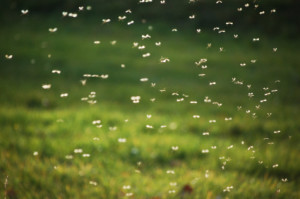 How would you like to be caught in a swarm of ginormous mosquitoes? Well, in Alaska this is a true story.
How would you like to be caught in a swarm of ginormous mosquitoes? Well, in Alaska this is a true story.
Unbelievable Mosquito Masses
Researchers Jesse Krause and Shannan Sweet were caught in an awful swarm while researching at the Toolik Field Station on Alaska’s North Slope. Alaskan mosquitoes are notorious for their size and swarms. The mosquito is sometimes joked around as the state bird. They come in such numerous amounts that it’s unbelievable! Sweet states on video how “the whole horizon is nothing but mosquitoes.” Crazy Alaskan stuff!
Like with most insects, mosquitoes in Alaska have a season of strength. They’re most abundant in the summer from late June clear through July. That’s the worst time to be caught in shorts and a tank.
West Nile & Other Inconveniences
There are 35 species of mosquitoes in Alaska and of these 35 only 2 of them actually spread West Nile Virus in the state. The virus has not been able to take hold in higher latitudes. So Alaskans might have to deal with the angry swarms and itches, but this menacing virus doesn’t seem to pose a threat.
For the residents of the lower 48 states, the virus is much more common. West Nile Virus has been on the rise in the continental United States. More and more cases are reported each year. According to the CDC, there are 43 species of mosquito known to carry West Nile Virus.
The biggest inconvenience that these seekers present is physiological stress. Preparing for a summer, especially in Alaska, seems like quite the burden; from buying the right repellent to wearing the right clothing to not being caught in the wrong place at the wrong time. It is all a nuisance that really should just go away.
Mosquito Tips
Getting ready for that harsh summer time, when the mosquitoes are in full bloom is definitely agitating. The following are tips that mosquito plagued areas should consider every year.
• Stock up on anti-seeker supplies. Insect repellent with lots DEET will definitely work best. Purchasing mosquito coils might also help keep them away from your home or other unwanted locations.
• Wear appropriate clothing. It’s really tempting to wear shorts and sleeveless clothing during the summer, but beware that this will give the mosquitoes a free and easy meal.
• Wear neutral colors. Mosquitoes are attracted to dark colors.
• Don’t use scented lotions, shampoos, or perfumes. They love this.
Author Bio: Heydi Ruelas is a journalism student and blogger for Bulwark Exterminating, an industry leader in providing high quality pest control service. When I’m not playing with my two adorable nieces, I’m on the tennis court chasing that little green ball around.
Related articles
8 Ways to Avoid Termite Destruction
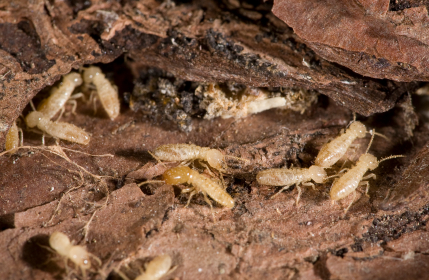 Every year termites wreak havoc among homeowners. These pesky critters will literally eat your home away. Termites feed off of organic matter such as wood. Considering most homes and buildings are made of at least some wood, termites tend to cause lots of structural damage; an average of about $5 billion per year in the U.S. The following tips can really put you one step ahead of these “silent destroyers.”
Every year termites wreak havoc among homeowners. These pesky critters will literally eat your home away. Termites feed off of organic matter such as wood. Considering most homes and buildings are made of at least some wood, termites tend to cause lots of structural damage; an average of about $5 billion per year in the U.S. The following tips can really put you one step ahead of these “silent destroyers.”
1. Remove Moisture
Termites thrive is moist environments. Keeping all sources of water to a minimum would greatly affect the survival of termites. Things like nearby water faucets and leaky pipes can really help termites survive near your home and should be properly fixed.
2. Reduce Direct Soil and Wood Contact
Having direct contact between the wooden parts of your home with the soil would give termites an all-access pass to your home. Termites, like most other bugs, live in the soil and forage for food. Having soil and wood in direct contact increases the risks that termites will find your home for lunch.
3. Fix Cracks, Openings, and Holes
Just like any other bug or unwanted intruder, having exposed cracks and holes into your home can let the termites in. Make sure any remotely thin openings or cracks in the foundation are properly sealed and fixed.
4. Don’t Store Wood or Mulch Nearby
Wood is a termite’s favorite meal, so storing it in the backyard can attract the critters. Piles of wood can easily gather moisture and having them close to the home will draw in the buggers. Mulch, which is meant to conserve moisture, can obviously also be very dangerous to keep nearby.
5. Remove Shrubs and Grass
Keeping the home free of grass and plant life will also help keep termites away. Sometimes plants like to cuddle up close to our homes, but these plants produce moisture, which will likely draw in the termites.
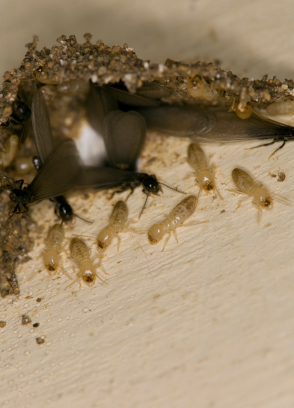 6. Ventilation
6. Ventilation
Keeping your home ventilated will help reduce moisture. Good air circulation will help maintain the buildup of moisture to a minimum.
7. Use Chemically Treated Wood or Timber That’s Naturally Resistant
When building a new home or making additions, it is always a good idea to look into some termite resistant materials to use. Some woods can be chemically treated to ward off those predatory termites.
8. Have Home Inspected Regularly
The best way to guarantee that your home is free of termites is to have a professional inspect your home regularly. Termites are “silent destroyers”, and before you know it your home could be crumbling to the ground. Having a professional rule out the presence of these critters is the best option for maintaining your home free of termites.
Houston Termite Control
Bulwark Exterminating10900 Brittmoore Park Drive
Houston, TX 77041
(281) 668-4930
bulwarkpestcontrol.com AAAnimal Pro: Wildlife Control
8280 Golf Green Circle
Houston, TX 77036
(832) 248- 7804
houstonwildlifepatrol.com Terminix
16155 Park Row, Suite 190
Houston, TX 77084
(832) 460-3698
terminix.com
Author Bio: Heydi Ruelas is a journalism student and blogger for Bulwark Exterminating, an industry leader in providing high quality termite control service. When I’m not playing with my two adorable nieces, I’m on the tennis court chasing that little green ball around.
Related articles
Houston Fire Ants Driven Out By ‘Crazy’ Ant Species
Rasberry Crazy Ants Driving Out Fire Ants In Houston
Most of us in Houston are very familiar with the wretched Red Imported Fire ants. They make huge mounds on our property, and one painful sting from this pesky ant will be a constant reminder to keep your distance.
Over the last few years, Houston residents have been noticing a different species of ant; a species that some are calling far worse than the fire ant. I’m talking about the Rasberry (not raspberry) Crazy ant, and it’s beginning to displace fire ants in many areas in Houston.
Areas in Houston infested with Crazy ants have very few fire ants present. The reason being is that the Rasberry Crazy ants are an extremely invasive species that out-compete all other species of ant found in Houston.
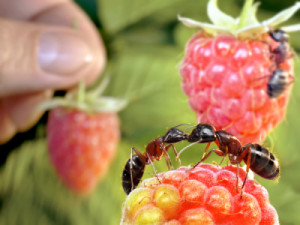 Crazy Ants vs. Fire Ants: Why Are Crazy Ants So Bad?
Crazy Ants vs. Fire Ants: Why Are Crazy Ants So Bad?
Rasberry Crazy ants are so bad, and so destructive, many residents are clamoring to get the fire ants back!
Crazy ants quickly outnumber other ant species because they multiply in even larger numbers. They are also difficult to control since they don’t eat the same poison baits as fire ants do.
Fire ants are in many ways very polite compared to crazy ants. When fire ants move into in your yard, they’ll form mounds and stay there. The Fire ants will only interact with you if you bother them or step on their unmistakable mounds.
Rasberry Crazy ants, on the other hand, “go everywhere,” invading homes and nesting in walls and crawlspaces, even damaging electrical equipment by swarming inside appliances. These ants are attracted to electrical impulses, chewing through electric insulation; they cause stop lights, air conditions, and other electrical equipment to short circuit. After being drawn into electrical equipment, they can easily cause shortages. Such actions often result in expensive repairs that inflict Houston homeowners.
On a positive note, Crazy ants don’t inflict painful stings like the Red Imported Fire Ants do.
Learn more about pest control methods for Fire Ants
Rasberry Crazy Ants
Imported from Brazil and Argentina in the 1930’s, the Rasberry Crazy ant has been infesting the Southeastern United States ever since. They are named after Tom Rasberry, the exterminator in Houston who discovered them. They are sometimes referred to as Tawny ants, but most people prefer the moniker “Crazy” because the ant’s erratic and non-linear movements.
Rasberry Crazy ants range in size from 1/16-1/8 inches long. They have slender bodies with long legs, and long antenna. They are reddish-brown in color, and are covered with fuzz. This fuzz makes the ant appear less glossy then other species of ant; and lead many to define the ant as “hairy.”
Ant Control In Houston, TX
Whether you are dealing with the painful stinging Red Imported Fire ant, or the destructive Rasberry Crazy ant; professional Houston Ant Control can help you with all of your ant problems. Ant control professionals in Houston are up to date on of the latest and most effective ant control methods and techniques to help Houston residents live ant free. Call today!
Bulwark Exterminating10900 Brittmoore Park Drive
Houston, TX 77041
(281) 668-4930
bulwarkpestcontrol.com AAAnimal Pro: Wildlife Control
8280 Golf Green Circle
Houston, TX 77036
(832) 248- 7804
houstonwildlifepatrol.com Terminix
16155 Park Row, Suite 190
Houston, TX 77084
(832) 460-3698
terminix.com
Related articles
Houston Roach Commercial
Wondering what that funny and slightly disturbing roach commercial was that aired before your movie at a Houston Cinemark? We have it here!
Summer Movie Madness
Last weekend was a huge box office weekend. “Iron Man 3” debuted with an astonishing $174.1 million in domestic sales, and squeaked out $680 million globally. Wow! It was the second largest debut of all time, behind last summer’s “The Avengers.” The debut of “Iron Man 3” also meant that the summer movie season has finally arrived much to our enjoyment.
I am personally looking forward to a few of these summer movies myself: “The Hangover 3,” “Man of Steel,” “Fast and Furious 6,” and “World War Z.”
Debut Of Houston Roach Commercial
With all of these summer movies kicking into full gear, the pest professionals at Bulwark Exterminating launched a new commercial entitled “Roaches Eat Toothpaste.” The one minute ad, which will play before your movies in a few select Houston area theaters, hopes to inform Houston residents about the growing roach problem in the city.
The Houston roach commercial shows an adult cockroach slurping down gobs of white toothpaste. Yes, revolting as it sounds, roaches frequently dine on toothpaste; as well as hair, blood, toenails, and dog doo. Watch the roach commercial yourself:
Houston Roach Commercial: Roaches Eat Toothpaste
See The Houston Roach Video In These Select Theaters
Cinemark Tinseltown 17 and XD1600 Lake Robbins Drive
The Woodlands, TX 77380
(281) 362-4340
cinemark.com Cinemark Theater
1030 West Grand Parkway North
Katy, TX 77449
(281) 371-6008
cinemark.com
Roach Control
While the “Roaches Eat Toothpaste” commercial was good for a laugh, having roaches infest your Houston home is no laughing matter. These cockroaches can spread diseases like polio, typhoid fever, leprosy, and bubonic plaque. Cockroaches also shed their body parts which can lead to asthma and other breathing problems. On top of all these problems cockroaches can cause, they also emit an unpleasant odor that will make your house stink. Yuck!
If you are seeing cockroaches in and around your Houston, TX home, get professional roach control.
Roach Control In Houston, TX
Bulwark Exterminating10900 Brittmoore Park Drive
Houston, TX 77041
(281) 668-4930
bulwarkpestcontrol.com AAAnimal Pro: Wildlife Control
8280 Golf Green Circle
Houston, TX 77036
(832) 248- 7804
houstonwildlifepatrol.com Terminix
16155 Park Row, Suite 190
Houston, TX 77084
(832) 460-3698
terminix.com
Related articles
Freakish Football Sized Snails Invade Houston
Freakish Football Sized Snails Invade Houston, TX
A giant African snail has been found right here in Houston, TX. Someone who lives on Twin Circle drive in the Briar Forrest area found on in their garden. After the snail that was spotted, it happened to get away and nobody knows where it went. Don’t ask me how it got away… it’s not like snails are fast. These snails have local residents, and scientists, worried. Where there is one snail, there will likely be many, many more.
The giant African land snail reproduces very rapidly. They can lay as many as 100 eggs a month, so it’s likely there are more like the one found on Twin Circle Drive came from. Parts of Florida are also currently under attack, with these freakish snails being found by the thousands.
These snails are about eight inches in length, and four inches in diameter. The biggest ones found are reported to be about the size of a football.
Giant African Snails Are Destructive
These giant African snails are quite a site, but scientists warn about the damage they can inflict to both humans and to property. These massive snails will make hole in the stucco and plaster on your home. If you run over one of them with your car, its shell can blow out your tire. They also feed on 500 different types of Houston plants, destroying your beautiful landscaping.
Giant African Snails Carry Deadly Disease
In addition to being destructive to your property, these gigantic African snails also carry a deadly disease that causes life-threatening meningitis. This parasitic disease can cause a lot of harm to humans, and sometimes even cause death. People are being warned not to touch them. You can get very sick if you do handle them. Most kids would look at a big snail like this and want to touch it. Neighbors and Houston residents need to be warned to stay away from these massive snails.
Pest Control In Houston, TX
If you are a Houston, TX resident and are seeing giant African land snails on your property, keep your distance and get professional Houston pest control.
Bulwark Exterminating10900 Brittmoore Park Drive
Houston, TX 77041
(281) 668-4930
bulwarkpestcontrol.com AAAnimal Pro: Wildlife Control
8280 Golf Green Circle
Houston, TX 77036
(832) 248- 7804
houstonwildlifepatrol.com Terminix
16155 Park Row, Suite 190
Houston, TX 77084
(832) 460-3698
terminix.com





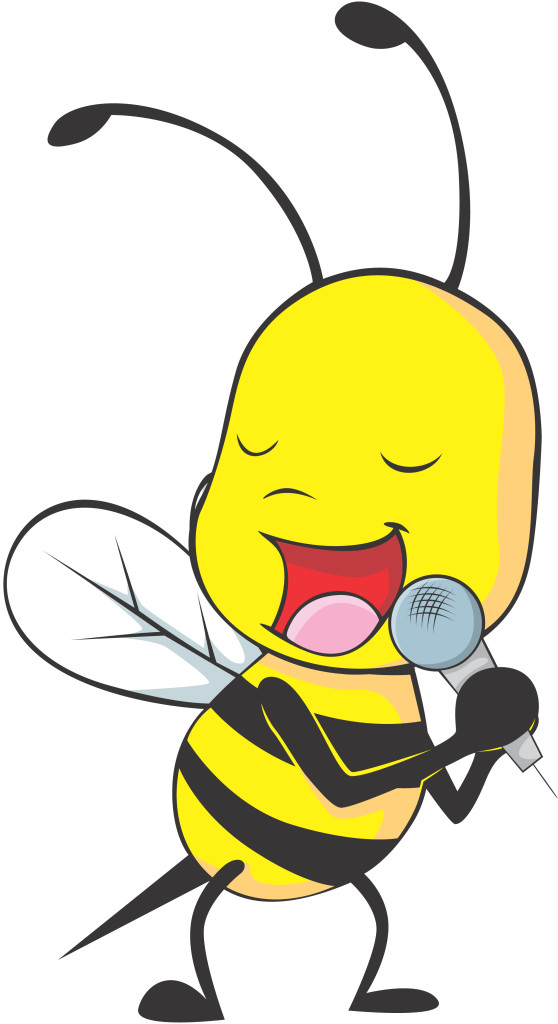


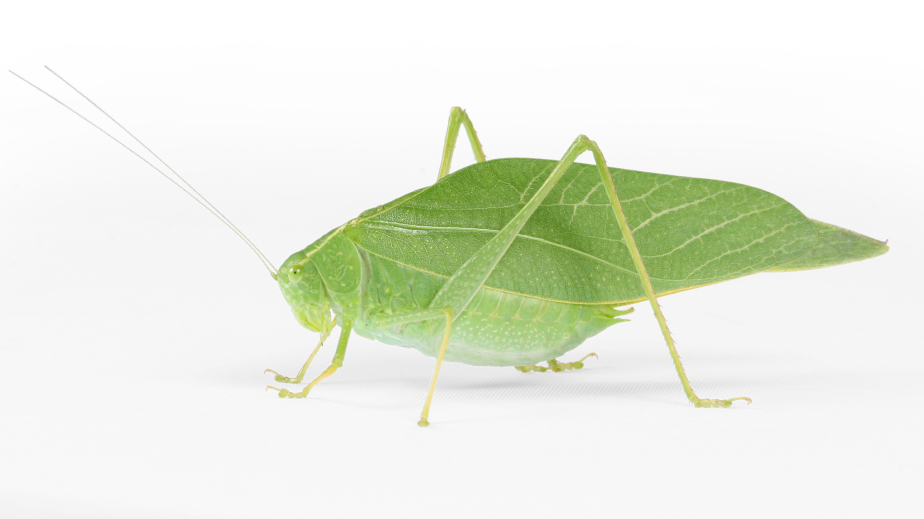
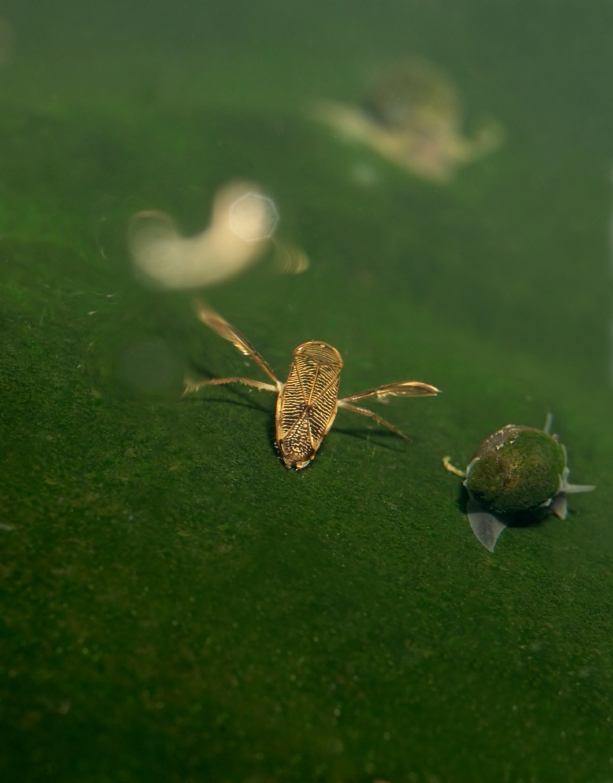



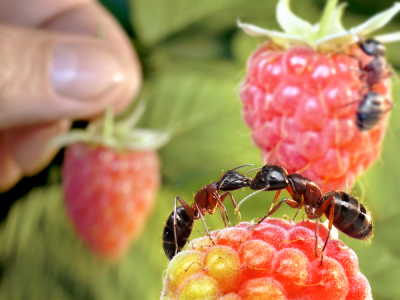
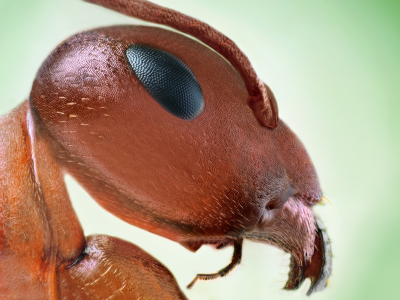
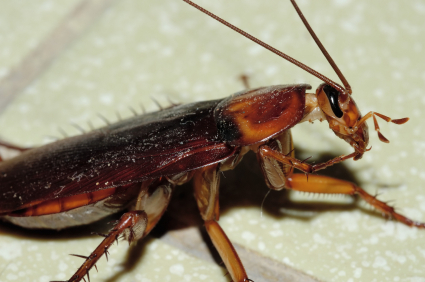







 Why Insects Aren’t As Bad As You Think
Why Insects Aren’t As Bad As You Think







